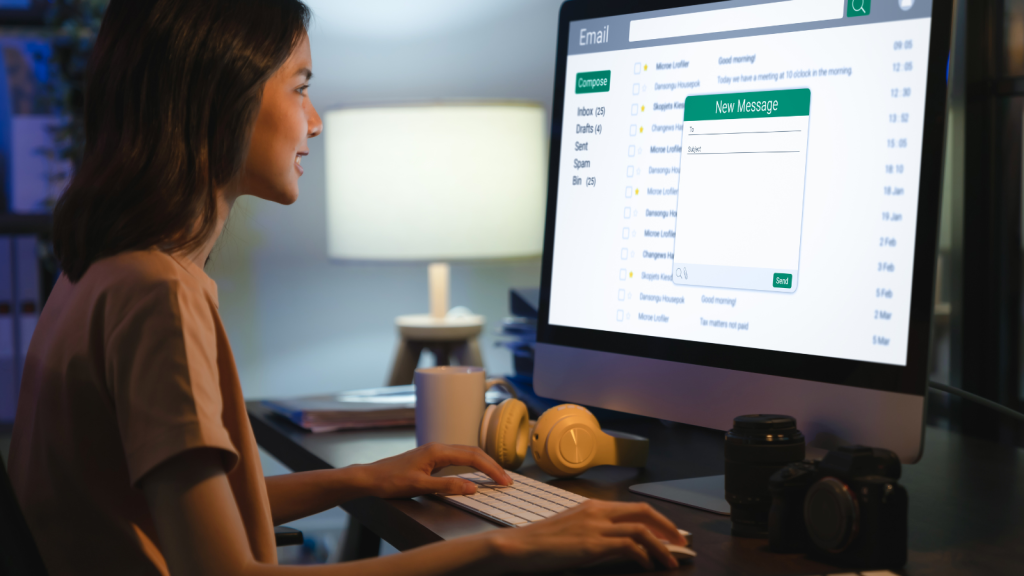Meet Jake, a marketing director at a small e-commerce company. His email open rates were low, engagement was declining, and sales from email campaigns were nearly nonexistent. Frustrated, he turned to industry-leading email campaigns for inspiration. By analyzing successful strategies across different industries, he transformed his campaigns into high-converting, engagement-driving assets. His company’s revenue skyrocketed, all thanks to the right email strategies.
If you’re looking to improve your email marketing, studying real-world email campaigns can give you the insights you need. In this guide, we’ll explore winning email campaign examples, untold tips, and NLP techniques to maximize exposure and engagement.
1. Why Studying Email Campaign Examples Matters
Many businesses make the mistake of sending emails without strategy, leading to poor results. Looking at successful email campaigns helps you:
- Understand what works in different industries
- Discover new engagement strategies
- Learn how to craft irresistible subject lines and CTAs
- Master NLP techniques for maximum impact
Let’s dive into some top-performing email campaigns that have set benchmarks across industries.
2. E-Commerce: Abandoned Cart Email by Nike
The Story:
Emma was about to purchase a new pair of running shoes but got distracted. A day later, she received an email from Nike with the subject: “Still thinking about these?” The email had a picture of the exact shoes she had left in her cart, along with a discount code valid for 24 hours.
Why It Worked:
✅ Personalization – Mentioning the exact product made it feel like a one-on-one conversation. ✅ FOMO (Fear of Missing Out) – The limited-time discount created urgency. ✅ Engaging Visuals – A dynamic image of her abandoned product re-engaged her interest.
Untold Tip:
Use AI-driven product recommendations in abandoned cart emails to suggest alternative options based on browsing behavior.
3. SaaS: Onboarding Email by Slack
The Story:
After signing up for Slack, Jason received a welcome email with the subject: “Let’s get started with Slack!” The email included a friendly video tutorial and a quick three-step guide to setting up his workspace.
Why It Worked:
✅ Seamless Onboarding – A well-structured guide ensured new users didn’t get lost. ✅ Conversational Tone – It felt like a helpful friend guiding Jason, rather than a robotic email. ✅ Nudged Action – The email included a CTA: “Create your first Slack channel now.”
Untold Tip:
Use NLP-based email copy to make onboarding emails sound like real conversations rather than generic instructions.
4. B2B: Re-Engagement Email by HubSpot
The Story:
Samantha hadn’t opened a HubSpot email in months. Then she received an email titled: “We miss you, Samantha!” The email included a poll asking her preferences, with options like “Send me fewer emails” and “I want more personalized tips.”
Why It Worked:
✅ Emotionally Engaging – The friendly “We miss you” subject line created a personal connection. ✅ Interactive Element – The poll made it easy for Samantha to engage without commitment. ✅ Customer-Centric Approach – HubSpot showed it cared about her preferences.
Untold Tip:
Incorporate interactive elements like polls or sliders in re-engagement emails to increase click-through rates.
5. Retail: Holiday Promotion Email by Starbucks
The Story:
Right before the holiday season, Starbucks sent out an email with the subject: “Your holiday favorite is back!” The email featured festive visuals, a personalized greeting, and a CTA to order ahead via the app.
Why It Worked:
✅ Seasonal Relevance – Tapping into holiday emotions boosted engagement. ✅ Personalization – The email referenced Emma’s previous holiday drink orders. ✅ Clear CTA – “Order ahead” encouraged immediate action.
Untold Tip:
Use AI to analyze past purchases and create hyper-personalized seasonal campaigns.
6. Nonprofit: Donation Appeal by UNICEF
The Story:
UNICEF sent an email with the subject: “One meal can save a life today.” Inside, a heartwarming story of a child in need was accompanied by a one-click donation button.
Why It Worked:
✅ Emotional Storytelling – A compelling narrative created an emotional response. ✅ Simple Call-to-Action – A single donation button made it effortless to contribute. ✅ Urgency & Impact – Showing immediate impact encouraged action.
Untold Tip:
Use NLP to detect emotional triggers in past donations and tailor future appeals accordingly.
7. How to Apply These Strategies to Your Own Email Campaigns
Now that you’ve seen examples from different industries, here’s how to apply these insights:
✅ Personalize Everything – Use first names, past behaviors, and AI-driven recommendations. ✅ Leverage NLP – Write emails that trigger curiosity, urgency, and connection. ✅ Optimize Timing – AI-powered send-time optimization ensures emails land when users are most active. ✅ Test and Iterate – Use A/B testing to refine subject lines, visuals, and CTAs. ✅ Make Emails Interactive – Polls, surveys, and dynamic content increase engagement.
8. Final Thoughts: The Power of a Well-Crafted Email Campaign
Jake, from our opening story, turned his struggling campaigns into high-performing assets by studying these examples and implementing NLP-based personalization. Today, his emails aren’t just sent—they’re opened, read, and acted upon.
If you want your email campaigns to drive real results, get inspired by proven strategies, add a human touch with NLP, and continuously optimize based on data. With the right approach, your next email campaign could be your most successful yet!

